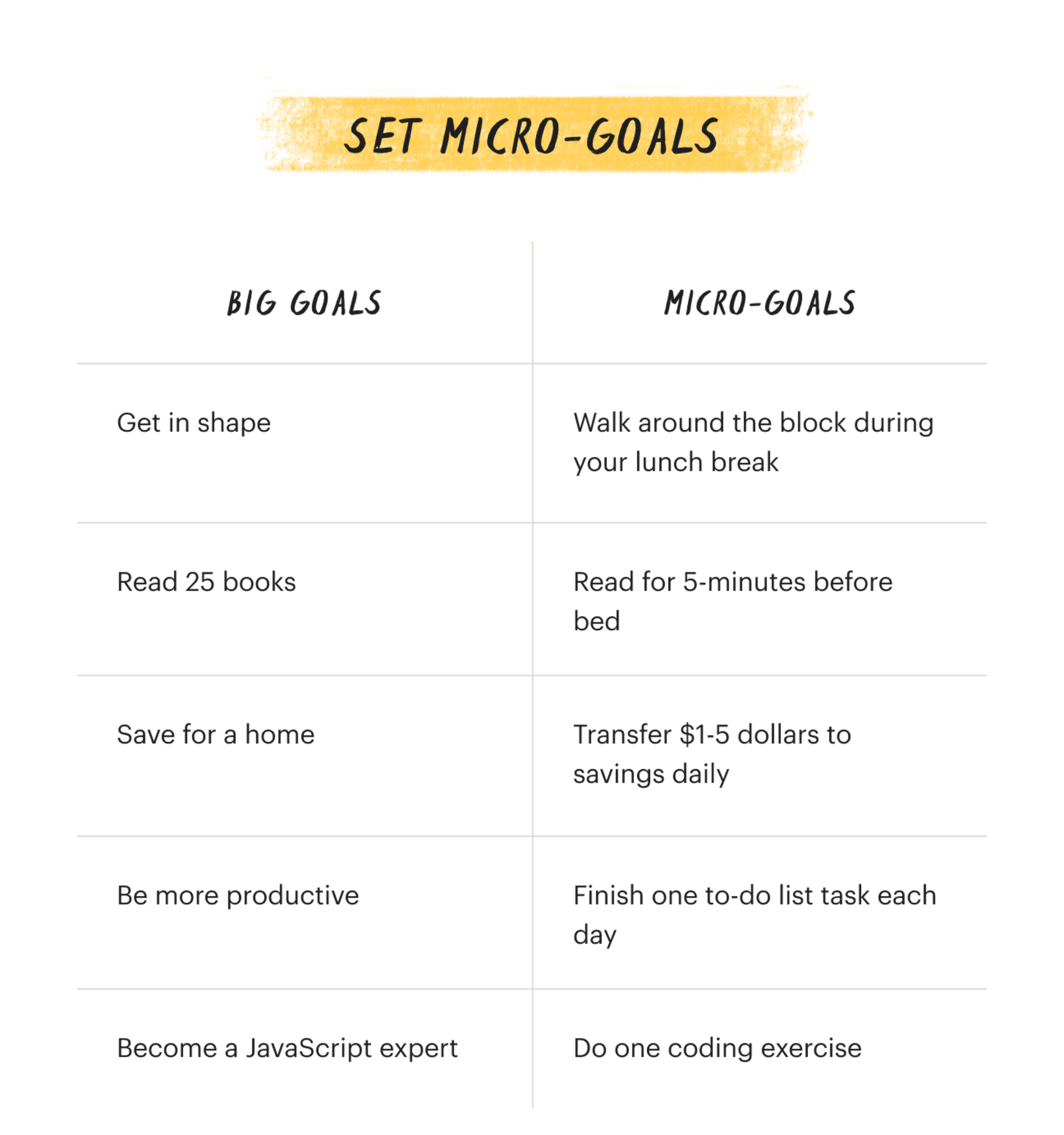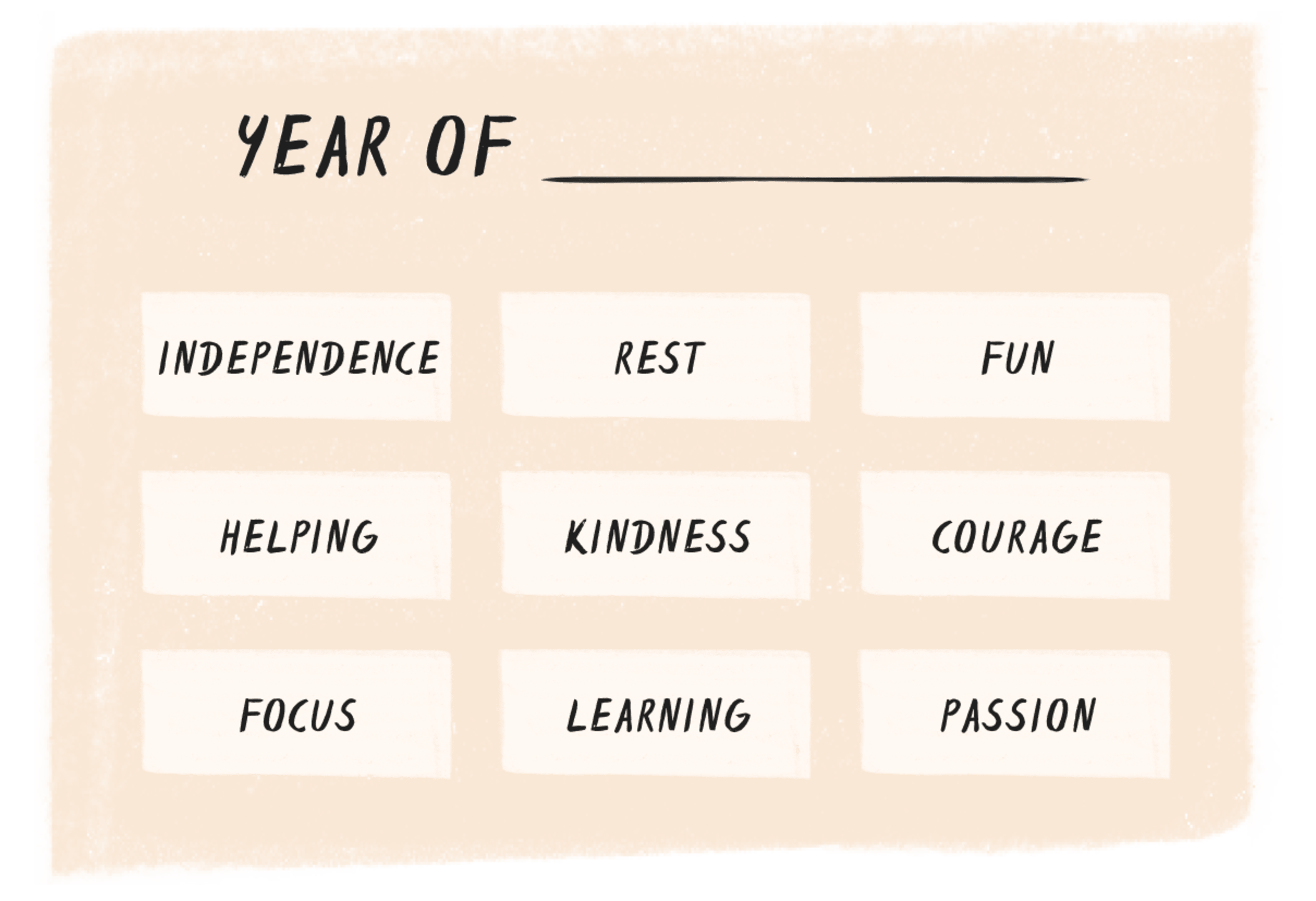“New year, old me.”
That’s not quite how the saying goes, but it might just resonate with you. Most of us start the new year with the best of intentions. We work out, read more, and become mindful of our spending.
But after a week or two, the sheen of a new beginning starts to wear off. Complacency makes a slow creep into our psyches. We start to choose Netflix over working on that script, opt for takeout over taking the time to meal prep, and tell ourselves we’ll do better next week. Or next month. Or next year....
There’s mountains of advice and methods for goal setting, often assembled into pithy acronyms like “SMART” and “FAST”, or not so pithy acronyms like “OKRs”. You may have tried these frameworks yourself with middling success. What if this year, instead of attempting to shove your toes into the same shoes that just don’t fit, you took an entirely different approach?
Radical change often requires a radically different mindset. This article will introduce you to a few unconventional goal setting methods you won’t find in any MBA curriculum. You might just discover a fresh approach you need that clicks with the way you want to live your life.
Create anti-goals
A few years ago Andrew Wilkinson, the Co-Founder of Tiny, was unhappy: work was getting in the way of the life he wanted to live. His calendar was packed with meetings, he was doing business with people he didn’t like, and he was stressed with the demands on his schedule. In an attempt to regain control and make work feel less like work, he took a novel approach to turning things around: anti-goals.
Wilkinson imagined his worst possible day –– meetings, travel, fatigue –– and worked backwards to set anti-goals, rules for avoiding this worst case scenario. For instance, in response to his desire to leave behind a day “full of long meetings”, he set the following anti-goal: “Never schedule an in-person meeting when it can otherwise be accomplished via email or phone (or not at all)”.
This goal setting method is a powerful alternative to regular goal-setting because you need to tie an anti-goal to an undesirable aspect of your life. In setting an anti-goal, it’s helpful to ask yourself this question from Jerry Colonna, a Coach and CEO of Reboot: “How am I complicit in creating the conditions I say I don’t want?”
Harness the power of anti-goals and create your own with these three steps:
- Draw a vertical line down the middle of a blank piece of paper
- On the left hand side, list 3-10 things you’re unhappy with in work or life that you would like to avoid or eliminate.
- For each condition of the left, create an anti-goal on the opposite right hand side with a tangible solution for solving this problem.

Anti-goals give us the opportunity to reflect on the life we don’t want in order to forge the one we do.
Set micro-goals
Even goals that are specific, measurable, and achievable when you set them can feel out of reach in practice. While you might have the time, desire, and wherewithal to “write a 40,000 word young adult novel”, the goal feels entirely overwhelming when you’re staring down a blank page. But what if the goal was just to write 50 words each day?
This is the strategy behind setting micro-goals. Rather than set a big sweeping goal, think of the smallest action you could take each day to accomplish what you ultimately want. And I do mean small: your micro-goal should take under 10 minutes to complete. 5 minutes is even better. Then do it every day. That’s it.

The simplicity of this method draws suspicion; it feels too easy to actually work. Achieving our goals should feel intense, a little miserable, but ultimately, rewarding. Right? Micro-goals don’t immediately satisfy any of those criteria. Here’s why they work anyways:
- Micro-goals create activation energy – The challenge of big goals is knowing where to start. On the other hand, it’s abundantly clear what you need to do in order to accomplish your micro-goal each day.
- Micro-goals help you build a habit – Completing a task, day-in and day-out, will eventually help you build a habit. In doing so, you won’t have to rely on motivation to drive towards what you want to achieve.
- Micro-goals force us to focus on the process – Goals like “lose 10 pounds” or “help my community” can be broken down to the smallest building block required to achieve them. A micro-goal is a process-oriented task that shifts our focus from a far-off theoretical destination to the concrete action we can take right now.
- Micro-goals propel us to do more – On some days, your micro-goal will be a struggle to complete. But on others, it will feel like a jump-off point, propelling you to do more. On those days, you’ll notice your 5-minute reading sessions turn into an hour immersed in a great story and your one crossed-off task evolving into a completed list of to-dos. The trick is to not expect yourself to do more lest your micro-goals become plain old overwhelming goals over time.
- Micro-goals compound over time – Done with intention, completing a micro-goal each day is a form of continuous improvement that helps us get a little bit better each day. Eventually, this adds up. James Clear, the author of Atomic Habits, refers to this phenomenon as “the power of tiny gains”. If you’re not convinced that incremental improvement adds up, consider the compounding gains of getting just 1% better every day:

If the weight of big goals feel insurmountable, opt for micro-goals that let you achieve something small each day and guide you towards accomplishing what you want in life.
Pick an annual theme
The laundry list of goals we set each year are intended to make us better in different areas of our lives –– healthier, better read, and more financially secure. But sometimes our good intentions can leave us feeling scattered and stretched, splitting our attention between different life objectives.
An annual theme can lend focus. CGP Grey, a popular YouTuber and podcaster, has recommended setting an annual theme in lieu of making new year’s resolutions:
“Give yourself a theme. Instead of setting yourself up to fail with, “I'm going to lose x pounds by next year,”or "I'm going to read one book a week, at least” a theme would be something like 'Year of Reading' or 'Year of Health'. Now if that sounds a bit broad, that's the point. For some things, precision matters. For others, it doesn't. And when trying to build yourself into a better version of yourself, exact data points don't matter. All that matters is the trend line. If the trend is going in the right direction, so are you.”
This method can help you focus your entire year, and help you filter each of your actions –– in life and work –– through the lens of your annual theme. With enough reflection, and perhaps an annual review, it might become glaringly obvious what you need more of in your life. If you ended the year in a state of burnout, opt to make this the “Year of Rest”. If your relationship with a significant other is in a rut, consider labeling this the “Year or Passion”. There might have been a theme that popped immediately into your year; choose that one.

Even if you set a theme to infuse change in a particular area of your life, you may be surprised by the far reaching effects. For example, if you opted for the annual theme of “fun”, here’s how your behaviours might change in different areas of your life:
- Opting to read comic books and graphic novels instead of business books
- Initiating plans with friends and planning entertaining social activities
- Pitching ideas at work that you would actually enjoy working on
- Spending time with your kids based on what they want to do
- Joining a dodge-ball league for more physical activity
Set an annual theme that has you excited about the months ahead and will inspire you to approach the year with new-found enthusiasm.
Change your environment
Our behaviors are dictated by our environments more than we notice. If you’re failing to reach your goals over and over again, it could be your setting that’s keeping you stumbling.
Our chosen homes, workplaces, neighborhoods, and even friend groups can unwittingly increase the likelihood of undesired or self-sabotaging behaviour. Changing your environment can help you better achieve your intentions by both lowering resistance to making good choices and eliminating temptations before you ever encounter them.

Of course, this approach to achieving our goals is easier said than done. Switching jobs or finding new friends can’t be done overnight and may feel like medicine –– we know we should, but don’t necessarily want to. Here’s a tip: think through how a change of setting could alter your life and give yourself the opportunity to experience that change.
Consider no goals
Here’s a radical approach to goal setting: don’t set them at all. Literally. That’s it.

If you’ve made it this far in the article, on a blog called Ambition and Balance, chances are the idea of not reaching for a goal feels scary. How can you accomplish something without explicitly setting your mind to it?
Leo Babauta, the author behind Zen Habits, suggests the best goal is no goal:
“These days, however, I live without goals, for the most part. It’s absolutely liberating, and contrary to what you might have been taught, it absolutely doesn’t mean you stop achieving things. It means you stop letting yourself be limited by goals.”
Babauta suggests a life without goals is free of the obligatory action steps that make us procrastinate. Instead, we can opt to fill our days and weeks with activities that fulfil our passions, widely exploring our own curiosities. Ask yourself the following question:
Chances are, the answer to this question is a better proxy for where you should focus your time and energy than an arbitrary list of goals you created because it was January 1. In the year ahead, experiment with being passion-driven, not goal-driven.
Straying from “common knowledge” and taking a contrarian approach to goals probably feels scary. But if you've already tried and failed the conventional way, what do you have to lose?
Imagine yourself a year from now, having tried the same tired goal setting methods and being in the exact same spot you are now. That should be more unnerving than trying something new. Give yourself permission to explore where the unconventional takes you.

